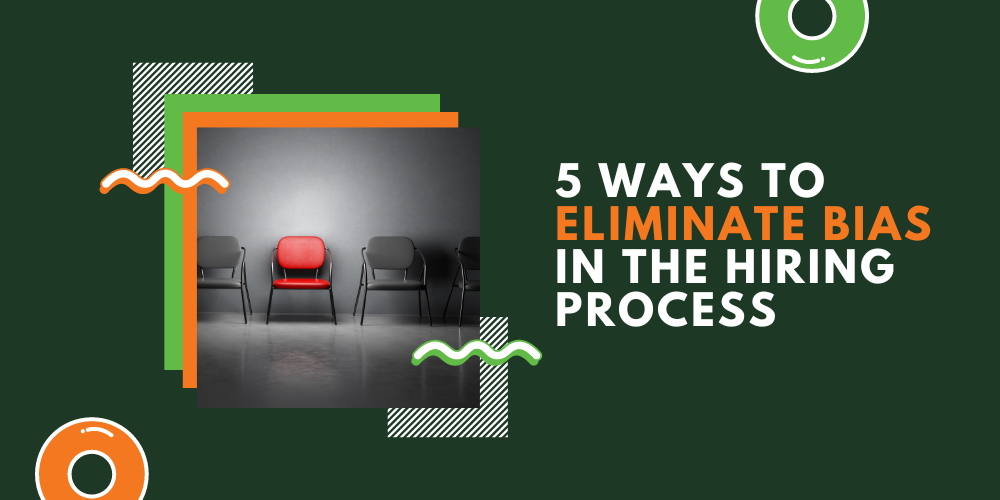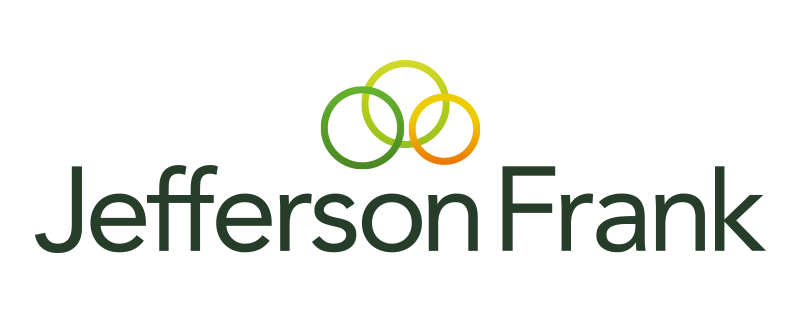
It’s time to talk about the elephant in the room.
Recent research shows that over three-quarters (79%) of HR professionals believe unconscious bias exists in both recruitment and succession planning decisions.
Very few organizations intentionally incorporate bias into their hiring processes. Yet the unfortunate truth is that this doesn’t stop bias from negatively impacting recruitment across all sectors.
This simply isn’t good enough.
Bias is so prevalent in recruitment because the majority of it occurs subconsciously or unconsciously. To successfully eliminate bias from the hiring process, employers must be proactive in addressing the problem head-on.
But what can recruiters and hiring managers do to actively cultivate fairer hiring practices? To tackle bias at its roots, organizations must first be aware of the biases impacting their hiring approach, and then make the necessary adjustments to ensure a level playing field for all. And in this post, we’re showing you how.
7 types of hiring biases
Here are the most common unconscious and subconscious biases that impact hiring across all industries:
- Confirmation bias: the tendency to interpret new information as confirmation of an existing belief. Example: an interviewer asking a question constructed to elicit an answer that reaffirms their initial assumptions about the candidate.
- Expectancy bias: the tendency to allow existing expectations to influence a decision. Example: a hiring manager expects a new hire to be the same as the candidate they replace.
- Affinity bias: the tendency to favor someone similar to ourselves. Example: a recruiter prefers one candidate over the other because they share similar interests.
- Horn effect: the tendency to allow a single negative trait to influence an overall perception. Example: an interviewer believes a candidate would be a poor salesman because they come across as introverted.
- Contrast bias: the tendency to judge something by comparing it with something else, rather than against objective criteria. Example: an employer believes a good resume is poor because it’s read after a particularly strong one.
- Conformity bias: the tendency to conform to the majority opinion of those around us. Example: one recruiter changes their view of a candidate based on the opinions of another recruiter.
- Non-verbal bias: the tendency to be overinfluenced by body language. Example: a recruiter passes on a suitable candidate because they acted nervously.
Why is eliminating bias in recruitment important?
Regardless of the context, bias rarely has a positive influence.
But when it comes to recruitment, the impacts can be particularly concerning. Recruitment biases often cause and extenuate inequalities across the workforce, resulting in less diversity, inclusion, and equality (DEI) industries-wide.
Take the tech industry, for example. Despite being one of the most forward-thinking and fast-paced sectors there is, the industry lacks gender diversity: although they make up almost half of the workforce, current forecasts predict that women account for just 33% of tech professionals. In fact, just 14% of AWS professionals in our report believe that there is no gender inequality in their industry, highlighting how big of an issue this is, in just one area of tech.
Of course, ensuring fair hiring practices is simply the right thing to do. But eliminating bias from your recruitment also boasts a whole range of other advantages to your organization. For example, a study by McKinsey found that companies in the top quartile for gender diversity were 25% more likely to have above-average profitability, while organizations in the top quartile for ethnic diversity were 36% more likely.
That’s not to mention the impact eliminating bias will have on your retention rates. ThriveMap report that 9 in 10 managers admit that they’ve made a hiring mistake, and 55% of these managers believe the mistake was because of trusting their intuition. When considering that the average cost of a single bad hire is $14,900, it’s fair to conclude that biased hiring benefits neither candidates nor employers in the long run.
Build a diverse candidate pipeline with Jefferson Frank
5 ways to eliminate bias in the recruitment process
Here are 5 ways your organization can eliminate bias in your hiring processes:
- Inclusive job adverts
- Blind resumes
- Standardized interviews
- Diverse hiring teams
- Work with a specialist
1. Inclusive job adverts
You might assume that hiring biases only become a factor once a candidate has submitted a resume, but the truth is that bias often plays a fundamental role in hiring from day one.
The way in which you write and construct a job advertisement has a major impact on the type of professional you attract. Job descriptions tailored towards a pre-conceived ‘ideal candidate’ are inherently biased, discouraging a wave of suitable candidates from ever even applying.
Take, for example, a female developer put off by an ad full of ‘tech-bro’ talk, or a foreign candidate fluent in English who is deterred for not being a ‘native-English speaker’.
It’s important not to analyze the inclusiveness of your job ad from your sole perspective — we all interact with these descriptions in different ways. Women place more importance on fitting all of the desired criteria, for example, while minority candidates are less likely to understand culturally-exclusive references and metaphors.
Ensure you’re writing inclusive job adverts to eliminate bias from your candidate pool, using the following techniques:
- Avoiding gender-coded language and pronouns
- Listing only the essential role requirements
- Ditching culture references, alternative job titles, and confusing metaphors
- Stating salaries and perks (in the US, this is a legal requirement in some states)
- Ensuring complete transparency
Helps to reduce:
- Expectancy bias
- Affinity bias
2. Blind resumes
Blind resumes are becoming more and more common in today’s job market, with many candidates purposefully crafting their resumes in this way.
A blind resume does not detail the applicant’s gender, age, or ethnicity, and is intended to place the focus solely on the candidate’s skill, knowledge, and experience. It typically consists of:
- Contact info: rather than giving away identifiable characteristics like name, gender, and age, blind resumes feature just a phone number and/or email address to enable the organization to contact the candidate.
- Employment info: blind resumes don’t include anything that isn’t directly related to the role at hand. They detail a candidate’s employment history and related experience, with associated dates often emitted.
- Academic info: blind resumes highlight the candidate’s expertise by detailing their educational history and academic achievements, again with the dates emitted for extra anonymity.
Not only does this reduce hiring biases by ensuring objectivity in your decision-making, but by emphasizing only the relevant qualities and qualifications, hires tend to be more successful: retention is improved and plans are better executed.
Organizations can introduce blind resume formatting as a standard by adding it to job application guidelines. Better yet, by promoting this hiring process in your job adverts, you’re more likely to attract every relevant applicant, reducing bias in your candidate attraction too.
Helps to reduce:
- Affinity bias
- Confirmation bias
- Expectancy bias
3. Diverse hiring teams
Bias occurs when hiring processes are built around one single perspective.
While you can take active steps to be more aware of unconscious and subconscious biases, unless your processes are designed collectively, likely, bias will still seep into your approach.
By building hiring teams that consist of a diverse range of recruiters and decision makers — professionals of different ages, identities, and backgrounds — you benefit from a greater perspective and understanding.
In turn, decision-making across your hiring processes becomes more inclusive, better informed, and ultimately more successful. Better yet, diverse hiring teams don’t just reduce the likelihood of bias occurring, but also present more opportunities for bias to be identified and addressed in the rare instances it still occurs.
However, it’s important to note that a diverse hiring team alone won’t eliminate bias — each unique perspective in your team brings its own intrinsic biases and preferences along with it. So, ensure these diverse hiring teams are trained on impartial and inclusive hiring and familiarized with your organization’s own DEI commitments and policies.
Helps to reduce:
- Non-verbal bias
- Conformity bias
- Contrast bias
- Affinity bias
- Horn effect
- Expectancy bias
- Confirmation bias
4. Standardized interviews
Bias is perhaps hardest to combat in the interview stage of the hiring process. That’s because interviews are fundamentally biased — interviewers must make a judgment on each candidate, and often follow their ‘gut feeling’ when choosing between applicants.
Interviews both in-person and over phone and video calls are often vulnerable to a lot of subjectivity. Whether or not it goes well may depend on a wide range of factors not directly related to the candidate’s competency, like how well the candidate engages in small talk, how much they have in common with the interviewer, or how interesting an interviewer finds the candidate’s personality or interests.
One way to tackle this bias is to introduce a standardized (or structured) interview process. Following this method, all candidates are asked the same predetermined questions in the same order, and all responses are assessed based on the same criteria or scale.
This process is intended to ensure interviewers are evaluating each candidate objectively, avoiding emotional hiring in favor of a data-led focus that measures how competent a candidate is for a role.
Standardized interviews ensure deliberate, fair, and outcome-oriented decision-making across the hiring process that eliminates bias and maximizes the potential for success.
Helps to reduce:
- Conformity bias
- Affinity bias
- Horn effect
- Contrast bias
- Confirmation bias
- Non-verbal bias
5. Work with a specialist
Recruitment approaches are unconsciously and unintentionally rooted in bias, making it a systemic problem that won’t be fixed in one go, and overall, it’s important to acknowledge that there’s also no end point for diversity, equality, and inclusivity issues.
While taking steps towards cultivating fairer hiring, many organizations are choosing to pair with specialist recruitment firms with strong DEI values. This helps them ensure unbiased best practices are implemented efficiently and successfully across the hiring process.
By working with specialists well-versed in promoting equal opportunity on the job market, employers are guaranteed a diverse candidate pool and can work alongside recruiters to develop a fairer hiring culture in which everybody thrives.
Helps to reduce:
- Expectancy bias
- Conformity bias
- Affinity bias
- Contrast bias
- Conformity bias
Expanding your tech team? At Jefferson Frank, our market-leading knowledge, global network, and extensive experience enable us to build strong and diverse talent pipelines for organizations like yours. Find your next AWS professional without the risk of hiring bias by submitting your vacancy today.


